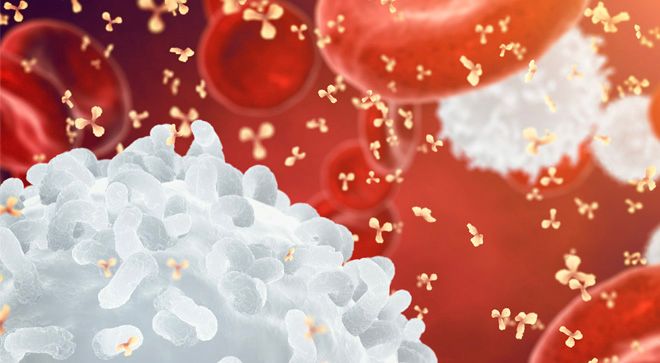Article
Bendamustine-Rituxan Combination Shows Promise in Frontline Treatment of Most Patients with Mantle Cell Lymphoma
Author(s):
“Moving forward, (bendamustine and Rituxan) will likely become a common backbone for the incorporation of other cytotoxic or novel agents in an attempt to further improve outcomes while maintaining an effective, safe, and ideally outpatient regimen for MCL,” the authors wrote.
Bendamustine and Rituxan (rituximab) is an effective induction regimen for both transplant-eligible and -ineligible patients with mantle cell lymphoma (MCL), with significant improvements in progression-free survival, compared with R-CHOP, according to data published in Blood Advances.
“For over two decades, consolidative high-dose chemotherapy and autologous stem cell transplantation (ASCT) have been used in responding young, fit patients given an association with improved progression-free survival (PFS) and overall survival (OS),” the authors wrote. “Maintenance rituximab after firstline immunochemotherapy, with or without consolidative ASCT, is also associated with improved outcomes, although it is unclear whether the choice of particular firstline immunochemotherapy regimens may influence the effectiveness of (maintenance Rituxan).
The authors noted that between January 2003 and May 2013, Rituxan, cyclophosphamide, doxorubicin, vincristine, and prednisone (R-CHOP) was the preferred firstline treatment option in British Columbia until June 2013, when results from the STiL-1 trial showed that bendamustine and Rituxan improved response rates and PFS (the time from treatment to disease worsening) compared to R-CHOP in the firstline setting.
To assess the efficacy of bendamustine and Rituxan as an induction therapy among all patients with MCL, researchers identified 190 patients aged 18 years or older that were treated with the combination in the frontline setting prior to December 2018 from the British Columbia Cancer clinical and pathology databases as well as the Leukemia/Bone Marrow Transplant Program of British Columbia database.
The goal, according to the authors, was to test the efficacy of the combination in patients regardless of if they were candidates for autologous stem cell transplantation or maintenance Rituxan.
The researchers used a cohort of 248 patients treated with R-CHOP between January 2003 and May 2013 as a historical comparison cohort.
Two patients treated with bendamustine and Rituxan died of infectious complications during immunochemotherapy and were not included in the evaluation. Out of the remaining 188 patients, 103 achieved a complete response and 62 achieved a partial response. However, 23 patients progressed during or within the first three months of receiving bendamustine and Rituxan.
After a median follow-up of 3.1 years following treatment with bendamustine and Rituxan, three-year PFS for the cohort was 66% and three-year OS was 73%. In comparison, after a median follow-up of 8.1 years, three-year PFS was 51.2% and three-year OS was 66.2% in patients from the R-CHOP group.
Patients who were aged 65 years or younger (89 patients) in the bendamustine and Rituxan cohort experienced similar three-year outcomes to the historical cohort of R-CHOP (142 patients).
Patients who were older than 65 years (101 patients) in the bendamustine and Rituxan group did have significantly improved three-year outcomes compared with patients in the R-CHOP arm (106 patients). Three-year PFS in the patients from the combination arm was 56.4% compared to 34.7% in the R-CHOP group. And three-year OS was 64.3% in the combination arm versus 55.4% in the R-CHOP cohort.
In a univariate analysis, treatment with bendamustine and Rituxan was associated with improved PFS but not OS compared with R-CHOP. Additionally, some characteristics in patients from the bendamustine and Rituxan group were associated with an inferior PFS and OS including, but not limited to:
- Age older than 65 years;
- high-risk disease, and
- elevated lactate dehydrogenase.
Of note, the authors suggest that treatment with the combination was not associated with favorable PFS or OS when maintenance Rituxan was included in multivariate models.
“In this retrospective population-based analysis, (bendamustine and Rituxan) was an effective induction regimen for both transplant-eligible and -ineligible patients with MCL, with significant improvements in PFS, but not OS, compared with R-CHOP in the whole cohort and in the subset of patients (older than) 65 years of age,” the authors wrote.
The researchers acknowledged that the study did have its limitations, including the retrospective and nonrandomized design, as well as short follow-up in the bendamustine and Rituxan group. Additionally, the larger availability of maintenance Rituxan for all patients with MCL after 2012, according to the authors, could have contributed to favorable outcomes.
“Moving forward, (bendamustine and Rituxan) will likely become a common backbone for the incorporation of other cytotoxic or novel agents in an attempt to further improve outcomes while maintaining an effective, safe, and ideally outpatient regimen for MCL,” the authors concluded.
“Although our data suggest that (the combination) is an effective and well-tolerated induction regimen for patients with MCL, outcomes are suboptimal for those with high-risk features, and further studies integrating novel agents are warranted.”




